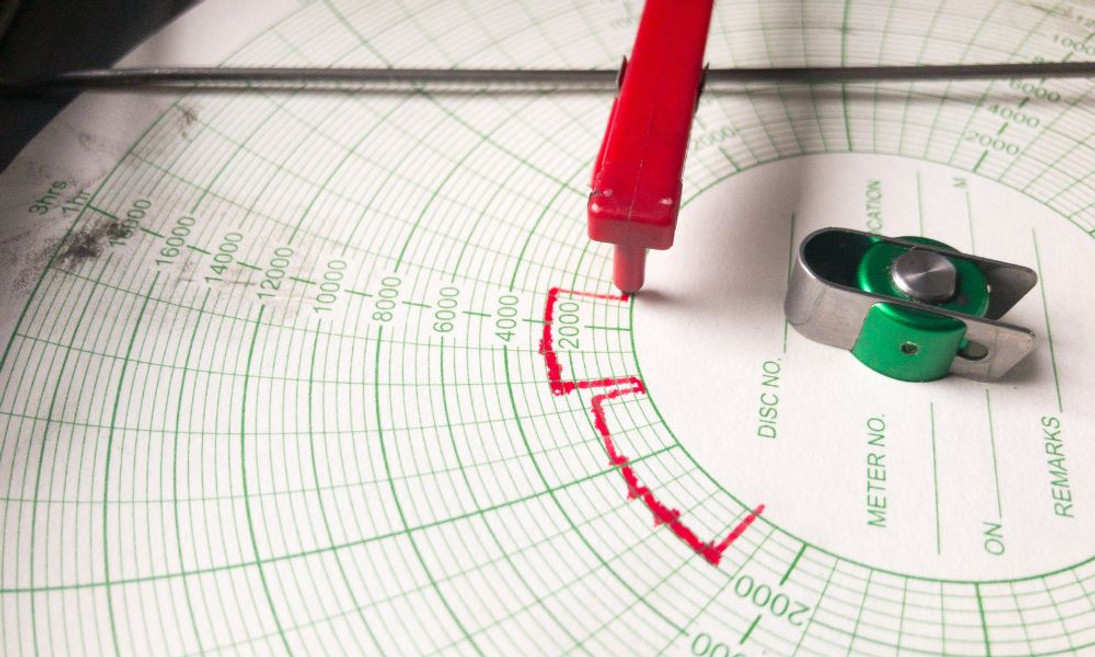28th Nov 2023
Pros and Cons of Analog Chart Recorders vs. Digital
In the world of data collection and monitoring, the debate between analog chart recorders and their digital counterparts continues to pester industry experts. Both systems come with their unique advantages and limitations. It’s time to learn more about the pros and cons of analog and digital chart recorders to find the best way to record data in your field of expertise.
Pros of Analog Chart Recorders
Functions in Rugged Environments
These devices can perform without any power source, from the most remote weather stations to bustling factory floors, making them indispensable tools. These devices can withstand extreme temperatures, high humidity, and dust.
Easy To Use in Various Industries
The versatile design establishes a widespread application of analog devices. They may record the weather, experiments in the medical field, machine habits in the manufacturing industry, and much more. Plenty of opportunities exist to collect the data your business needs to thrive.
Prevents Data Loss
Analog chart recorders produce permanent physical data records that you can store and preserve for future use. While digital recorders can face corruption or hacks, analog devices are reliable and secure.
Cons of Analog Chart Recorders
Risk of Human Error from Visual Interpretation
The data appears in a graphical format with plotted measurements. The visual representation demonstrates changes and trends and makes the data easier to interpret.
However, it is possible for humans to incorrectly translate the data. It is largely subjective, so individuals can influence the information with their perceptions.
Need for Replacement Parts
Analog chart recorders are not immune to wear and tear. Over time, defective circular chart pens and other components will need replacing.
It’s important to always have additional parts on hand to avoid any data collection delays. Reinstalling the items will ensure you don’t lose valuable time and information.
Pros of Digital Chart Recorders
Integration With Digital Systems
Digital chart recorders can create real-time data transfer. The integration capabilities enhance both data accessibility and usability.
You can now use various software applications to further process and analyze the recorded data. Now, making in-depth conclusions and facilitating data-driven decision-making is simple.
Precise Measurements
Digital chart recorders excel in the realm of precision measurements. Analog devices are subject to human error and interpretation. Digital recorders capture and record data with incredible accuracy to prevent even the smallest discrepancies.
Easy Data Management
The data they generate is inherently digital, enabling easy storage, retrieval, and analysis. They’re easy to store with entire libraries of readings that fit onto a single hard drive.
Retrieving and analyzing this data is also straightforward to pull up and analyze, which is particularly beneficial in long-term monitoring scenarios or when dealing with complex datasets.
Cons of Digital Chart Recorders
Reliance on Electricity
Digital chart recorders must have a reliable power source, and, occasionally, a stable internet connection. As a result, working in remote or power-deprived locations may be impossible with these devices.
Lack of Portability
Working quickly and efficiently can be a struggle with a device that is challenging to transport. Since digital chart recorders rely on electricity, they inherently lack portability. Teams will often spend hours trying to figure out how to accommodate this device, from choosing a location to finding a power source.
Risk of Data Loss or Corruption
Digital chart recorders store information electronically. Power outages, hardware failure, cyber threats, and software glitches may lead to data loss or corruption. Despite the convenience of these devices, all the valuable data can disappear in an instant.
Are You Ready To Make a Decision?
Imagine a scenario where a weather monitoring station uses digital chart recorders to collect data across a wide geographical region. The digital nature allows instant transfers over long distances and real-time weather updates. The hard copy output also makes it quick and easy to track weather fluctuations.
The pros and cons of analog and digital chart recorders are numerous. The secret to selecting one is to find which style will better suit the data you must collect.

